Introduction
Nestled within the lush landscapes of the United Kingdom, gardens play a pivotal role in shaping the natural beauty of our surroundings. Whether you’re a seasoned gardener or a novice with a green thumb, understanding how the orientation of your garden influences plant growth and sunlight exposure is key to creating a thriving outdoor oasis.
In this blog, we’ll explore the unique characteristics of gardens facing different directions and offer insights into the best plants to cultivate in each. Let’s embark on a journey through the compass points, discovering the secrets that nature has woven into the tapestry of British gardens.
North-Facing Gardens
Shadows and Brilliance: Sun and Shade in North-Facing Gardens
North-facing gardens paint a canvas of cool tranquility and subdued brilliance, offering a haven for plants that thrive in the more tempered sunlight. Positioned to capture the soft glow of morning light and shielded from the intense midday sun, these gardens create an environment where shade-loving plants flourish and delicate blooms unfold.
Morning Sunlight Embrace:
With an orientation that welcomes the morning sun, north-facing gardens experience a gentle awakening as the sunlight caresses the landscape. Shielded from the harsh midday rays, these gardens provide a cooler and more serene atmosphere. The morning light becomes a nurturing force for plants that prefer subdued brilliance, creating a haven for a diverse array of species that revel in the softer, cooler glow.
Balanced Light and Shade:
The hallmark of north-facing gardens lies in the delicate balance they strike between light and shade. Unlike the more prolonged sunlight exposure of south-facing gardens, the northern orientation offers a nuanced play of light throughout the day. The sunlight, while less intense than the afternoon sun, still provides ample energy for plant growth. This equilibrium allows for a diverse palette of plants, from shade-loving foliage to flowers that bloom in the filtered sunlight, resulting in a garden tapestry that exudes tranquility and understated beauty.
5 Best Plants for North-Facing Gardens
Hosta
Renowned for their opulent foliage, Hostas stand as verdant emblems of shade-loving elegance. With a wide array of leaf shapes, sizes, and colours, these plants bring a rich tapestry to your garden. Flourishing in the cool embrace of north-facing gardens, Hostas become living sculptures, casting a calming ambiance with their intricate and textured leaves.
Ferns
Transport your garden to an ancient woodland with the lush presence of Ferns. Adoring the cool and damp conditions characteristic of north-facing gardens, Ferns unfurl their delicate fronds, adding a touch of prehistoric charm. Whether gracefully arching or forming a verdant carpet beneath taller companions, these resilient plants become the embodiment of woodland enchantment.
Fuchsia
In the dappled sunlight of partial to full shade, Fuchsia, also known as Bleeding Heart emerges as a botanical masterpiece. Its distinct heart-shaped flowers dangle delicately, creating a romantic and captivating display. Flourishing in the sheltered corners of north-facing gardens, Bleeding Heart adds a poetic allure to the shaded landscape, enticing both gardeners and admirers alike.
Lungwort
As an early herald of spring, Lungwort graces north-facing gardens with its speckled leaves and dainty blooms. Thriving in the cool, shaded realms, this resilient plant is a testament to adaptability. With its unique foliage and charming flowers, Lungwort becomes a reliable companion, adding interest and vibrancy to the subdued corners of your garden.
Astilbe
Known for its feathery plumes of flowers, Astilbe emerges as a captivating presence in the moist and shaded quarters of your garden. The lacy blooms, rising like ethereal wands, bring a sense of grace and sophistication. Flourishing in the gentle shade, Astilbe’s varied colours and textures contribute to the dynamic charm of north-facing landscapes, creating a visual symphony in the cooler corners of your outdoor sanctuary.
Considerations for North-Facing Gardens
Soil Drainage Optimisation
Shaded areas in north-facing gardens are prone to retaining moisture, potentially leading to waterlogging. This can harm many plant species, as excessively damp soil may impede root health and foster conditions conducive to fungal diseases. Implementing effective soil drainage measures becomes paramount.
Incorporating organic matter, such as well-rotted compost or mulch, into the soil enhances its structure, promoting better drainage. Additionally, raised beds or planting on mounds can provide an elevated platform for plants, preventing water stagnation and promoting healthier root systems.
Frost Pocket Awareness
Cooler temperatures in north-facing gardens can result in the formation of frost pockets – localised areas where cold air accumulates and poses a threat to tender plants. Frost pockets may linger in these shaded spaces during winter, potentially causing damage to susceptible foliage. Vigilance is key. Gardeners should be attentive to microclimates within the garden, identifying areas prone to frost pockets.
Planting frost-resistant species in vulnerable spots and providing protective coverings, such as burlap or horticultural fleece, during frost-prone nights can safeguard plants from the detrimental effects of freezing temperatures. Additionally, selecting plants with a higher cold hardiness rating enhances resilience in the face of winter chill.
Strategic Plant Selection
Choosing plants ill-suited to the shade can result in lacklustre growth and diminished vitality in north-facing gardens. Some plants may struggle to thrive in the subdued light and cooler temperatures, leading to stunted growth and decreased flowering.
Select shade-tolerant and resilient plant varieties that have adapted to thrive in similar conditions. Consider the specific needs of each species, ensuring they are well-matched to the available light levels. Additionally, diversifying plant selections with a mix of foliage textures, colours, and blooming periods can create a visually engaging and dynamic garden that flourishes despite the challenges posed by reduced sunlight.
East-Facing Gardens
Dawn’s Radiance: Sun and Shade in East-Facing Gardens
The symphony of light unfolds uniquely in east-facing gardens, creating a captivating performance that showcases the beauty of morning sunlight and the gradual transition into the gentle embrace of shade. Positioned to receive the first rays of the sun as it emerges on the eastern horizon, these gardens become a haven for plants that thrive in bright, yet not overpowering, sunlight.
Morning Glory
As the sun rises, east-facing gardens are bathed in the soft, golden glow of morning sunlight. This early illumination provides an ideal environment for plants that relish the benefits of bright but not harsh light. The garden becomes a canvas for colours to come alive, casting a warm hue over leaves and flowers, creating an inviting atmosphere that welcomes both gardeners and pollinators.
Gradual Transition to Shade
As the day progresses, the sunlight in east-facing gardens gradually shifts into a dappled glow. Tall structures or neighbouring trees cast shadows that create a dynamic interplay between light and shade. This transition is a defining feature of these gardens, offering a varied environment that supports a diverse range of plant species adapted to different light conditions.
5 Best Plants for East-Facing Gardens
Roses
Basking in the morning sun, Roses in east-facing gardens unfurl their petals to embrace the gentle warmth, fostering not only healthy growth but also a spectacular display of vibrant blooms. The dawn’s radiance serves as a nurturing force, coaxing out the intricate beauty of each rose, creating an enchanting scene that lingers throughout the day.
Lavender
Poised to catch the early sunlight, Lavender becomes a fragrant symphony in east-facing gardens. Flourishing in well-drained soil, this aromatic herb not only thrives in the morning rays but gracefully transitions into dappled shade as the day progresses. Lavender’s resilience and aromatic allure make it a delightful companion in the evolving dance of light and shadow.
Camellia
Adorning east-facing gardens with their stunning floral display, Camellias embody grace as they adapt seamlessly to the changing light conditions. From morning sunlit showcases to the shaded elegance of afternoons, these resilient blooms paint a picture of enduring beauty. Camellias stand as a testament to nature’s ability to gracefully navigate the nuances of light.
Clematis
Climbing towards the morning light, Clematis vines in east-facing gardens showcase a remarkable balance of strength and delicacy. Using structures for support, these climbing wonders gracefully ascend, benefiting from the morning sun’s encouragement. Yet, they find solace in the shelter of afternoon shade, ensuring a harmonious journey through the day’s changing light.
Bergenia
With resilience as its ally, Bergenia emerges as a versatile and captivating presence in the cool morning sun of east-facing gardens. Remaining steadfast through the shifting light conditions, Bergenia’s robust demeanour offers year-round interest. As the garden transitions from dawn to dusk, these hardy perennials continue to contribute their unique charm, adding both texture and allure to the ever-changing canvas of the landscape.
Considerations for East-Facing Gardens
Moisture Management in the Morning Glow
Early exposure to sunlight in east-facing gardens can lead to faster evaporation of moisture from the soil. This presents a challenge, especially for plants with specific water requirements, as the soil may dry out more quickly. Regular monitoring of soil moisture levels is crucial.
Gardeners should establish a consistent watering routine to compensate for the potential evaporation. Applying a layer of organic mulch around plants helps to retain soil moisture, moderating the effects of the morning sun and ensuring that plants receive a steady supply of water. Additionally, choosing drought-tolerant plants that can thrive in these conditions minimises the need for excessive watering.
Strategic Placement of Taller Species
The transition from morning sun to afternoon shade is a defining characteristic of east-facing gardens. While this dappled light benefits many plants, some may still require protection from the intensity of the afternoon sun. The deliberate placement of taller plant species on the western side of the garden creates a natural shading effect as the sun progresses through the sky.
This arrangement provides afternoon respite for more delicate plants that may be prone to scorching in direct sunlight. Consider incorporating tall ornamental grasses, shrubs, or small trees strategically to cast shadows and create a visually appealing layered effect in the garden.
Seasonal Adaptation and Plant Selection
The angle and intensity of sunlight vary with the changing seasons, influencing the overall light exposure in the garden. It’s essential to consider these seasonal dynamics for sustainable plant growth. Choose a diverse array of plant species that can adapt to the evolving light conditions throughout the year.
Consider the height, growth patterns, and specific light requirements of each plant to ensure a harmonious composition. Plants with different bloom times can also be strategically positioned to maintain visual interest and colour in the garden across seasons. Regularly assess and adjust plant arrangements based on the shifting sunlight patterns to optimise the overall health and aesthetics of the garden.
South-Facing Gardens
South-Facing Gardens: Harnessing Daylong Radiance with Caution
South-facing gardens stand as sun-soaked canvases, embracing daylight throughout the day with open arms. Bathed in warmth and light, these spaces offer an enticing opportunity for a diverse array of plants to flourish. However, this abundance of sunlight also presents a challenge, which is the potential for scorching in the intense afternoon sun.
Daylong Radiance
From sunrise to sunset, south-facing gardens revel in the full glory of sunlight. Positioned to capture the sun’s journey across the sky, these gardens become vibrant havens for sun-loving plants that thrive under continuous illumination. This extended exposure to light allows for the cultivation of a wide variety of flowering plants, herbs, and vegetables that relish the warmth.
Intense Afternoon Sun
As the day progresses, south-facing gardens reach their peak in terms of sunlight exposure during the afternoon. While this prolonged illumination is a boon for many plants, it can also pose a risk of scorching. The intensity of the sun’s rays, particularly in the hottest months, may lead to leaf burn, dehydration, and diminished vitality in some plant species.
5 Best Plants for South-Facing Gardens
Lavatera
Radiating vibrant hues, Lavatera stands as a leading light, flourishing under the unfiltered sunlight that graces south-facing gardens. This hardy perennial not only thrives but comes to life in the full sun, making it a dynamic and lively addition to the sun-soaked landscape. Its resilient nature and vibrant flowers make it a delightful focal point in the sunlit haven of your outdoor space.
Agapanthus
These striking perennials, with their impressive clusters of flowers, revel in the warmth of the sun and truly come into their own when basking in full sunlight. Planted in the well-drained soil of a south-facing garden, Agapanthus becomes a magnificent spectacle, adding a touch of elegance and a burst of colour to the sun-drenched setting.
Echinacea
Celebrated for its ability to endure dry conditions, Echinacea is a resilient choice for the well-drained soil of a south-facing garden. This sun-loving perennial not only adds a pop of colour but also attracts pollinators, making it a vibrant and ecologically beneficial addition to your garden’s sunny corners.
Salvia
With a myriad of varieties to choose from, Salvia emerges as the artist’s brushstroke in your sunny garden, adding bursts of colour and texture. Flourishing in full sunlight, these hardy plants not only contribute to the visual tapestry but also serve as a pollinator magnet, inviting nature’s vibrant pollinators to dance amidst the blooms.
Osteospermum
In the sun-drenched canvas of your outdoor space, Osteospermum, also known as African Daisy, unfolds its petals profusely. These sun-loving flowers become a vivacious splash of colour, creating a lively and eye-catching display. With their resilience and unabashed bloom, Osteospermum adds a touch of warmth and charm to the radiant ambiance of your south-facing garden.
Considerations for South-Facing Gardens
Mulching for Moisture Conservation
Prolonged exposure to sunlight in south-facing gardens can lead to faster evaporation of soil moisture. This poses a risk, especially during warmer months, of soil drying out quickly, potentially affecting the well-being of plants. Mulching emerges as a crucial practice to conserve soil moisture.
Applying a layer of organic mulch around plants helps to regulate soil temperature, reduce water requirements, and inhibit weed growth. Additionally, mulching contributes to the improvement of soil structure, fostering a more moisture-retentive environment that supports plant growth. Consider using materials like straw, bark, or compost as effective mulching agents.
Strategic Shading for Delicate Plants
While many plants thrive in the full sun, some may be more sensitive to the intense afternoon sunlight in south-facing gardens, risking sunburn and stress. Providing strategic shading during the hottest part of the day becomes essential.
This can be achieved through the use of garden structures such as pergolas, arbours, or strategically placed tall plants and trees. Consider introducing shade-loving plants in specific areas or using shade cloth to protect more delicate species from the direct afternoon sun. This thoughtful approach ensures a balanced environment where a variety of plants can coexist harmoniously.
Hydration Management
South-facing gardens, exposed to prolonged sunlight, may experience higher water requirements, especially during warmer seasons. Efficient water management is crucial to prevent dehydration and stress in plants. Establishing a consistent watering schedule is essential for the well-being of plants in south-facing gardens. Water deeply and infrequently to encourage deep root growth, enhancing the plant’s ability to withstand periods of dryness.
Consider installing drip irrigation systems or soaker hoses to deliver water directly to the root zone, minimising water wastage through evaporation. Conduct regular soil moisture assessments to adjust watering frequencies based on the specific needs of different plant species. In the realm of south-facing gardens, where sunlight reigns supreme, the significance of effective irrigation cannot be overstated.
Ensuring proper water management becomes paramount in sustaining the vibrant life within these sun-soaked spaces. For a deeper dive into the art of water management and irrigation, NGS has curated another insightful blog, exploring techniques and strategies to optimise hydration in gardens.
West-Facing Gardens
Warm Afternoons: Sun and Shade in West-Facing Gardens
West-facing gardens unfold as a picturesque blend of sun-kissed warmth and subtle shade, creating a harmonious environment for a diverse array of plants. Positioned to welcome the afternoon sun, these gardens offer a unique balance of light and shade, fostering versatile conditions that cater to the needs of various plant species.
Afternoon Sunlight Embrace
As the day progresses, west-facing gardens become bathed in the warm glow of the afternoon sun. Positioned to capture the sun’s descent in the western sky, these gardens enjoy extended periods of sunlight that contribute to their inviting and comforting ambiance. The afternoon light provides an opportunity for sun-loving plants to flourish while also creating pockets of shade that add depth and complexity to the garden landscape.
Balanced Light and Shade
One of the distinctive features of west-facing gardens is the equilibrium they strike between sunlight and shade. The late afternoon sunlight is often less intense than the midday sun, offering a favourable balance for a wide variety of plant species. This versatility allows gardeners to cultivate plants with diverse light requirements, creating a dynamic and visually appealing tapestry.
5 Best Plants for West-Facing Gardens:
Helenium
These vibrant daisy-like flowers unfold their brilliance, thriving in the warm embrace of the afternoon sun in west-facing gardens. Resilient and dynamic, Helenium become a beacon of colour, infusing energy into the sunlit corners of your outdoor space, creating a lively and cheerful display.
Phlox
Select from the diverse array of Phlox varieties to introduce bursts of colour and fragrance to your garden. Well-suited to the afternoon sun, Phlox becomes a fragrant symphony, enhancing the sensory experience of your west-facing garden with its vivid hues and delightful scents.
Coreopsis
With its bright yellow blooms, Coreopsis becomes a radiant addition to the warmth of the afternoon sun. Flourishing in the sun-drenched landscape of a west-facing garden, these resilient flowers add a cheerful burst of colour, creating a visual delight that persists throughout the sunlit hours.
Rudbeckia
Embodying hardiness and a love for warmth, Rudbeckia, commonly known as Black-Eyed Susan, becomes a summer stalwart in west-facing gardens. These perennials produce cheerful flowers that resonate with the sun’s warmth, infusing your garden with a sense of joy and vibrancy throughout the summer months.
Daylilies
Known for their unwavering resilience, Daylilies become a captivating presence in the afternoon sunlight. Thriving in the warm ambiance of west-facing gardens, these versatile perennials showcase a variety of colours, adding a spectrum of hues to your outdoor haven and standing as a testament to nature’s enduring beauty.
Considerations for West-Facing Gardens
Implementing Windbreaks for Plant Protection
West-facing gardens are often more exposed to prevailing winds, which can lead to desiccation, damage, or stunted growth in plants. Implementing windbreaks becomes crucial to shield plants from the full force of prevailing winds. Consider using physical barriers like fences, hedges, or strategically planted shrubs and trees to create a protective barrier.
This helps to reduce wind speed and turbulence, creating a more sheltered microclimate within the garden. Selecting wind-resistant plant species for the outer edges of the garden also contributes to fortifying against the impact of strong winds.
Mindful Management of Late Afternoon Sun and Heatwaves
The late afternoon sun in west-facing gardens, especially during heatwaves, can lead to potential overheating and stress in plants. Gardeners need to be vigilant in managing the potential for overheating. Incorporating shading elements such as pergolas, shade sails, or tall plants strategically placed to cast afternoon shadows helps mitigate the impact of direct sunlight.
Additionally, choosing plants that are well-adapted to withstand higher temperatures and providing adequate mulching to regulate soil temperature can contribute to the overall resilience of the garden during heatwaves.
Hydration Strategies for Optimal Watering
Elevated temperatures, intensified by the late afternoon sun, can result in increased water requirements for plants in west-facing gardens. Develop a robust watering strategy to meet the heightened demands of plants during warmer periods. Watering in the early morning or late evening when temperatures are cooler helps minimise water loss through evaporation.
Incorporating moisture-retaining amendments into the soil, such as organic compost or mulch, aids in water conservation. Additionally, installing an efficient irrigation system with adjustable settings allows for precise watering based on the specific needs of different plants, ensuring they remain adequately hydrated.
NGS: Tailored Excellence
We elevate garden design and landscaping to an art form, seamlessly weaving together aesthetics and functionality to transform outdoor spaces into personalised masterpieces. With a commitment to understanding the unique challenges and advantages presented by each garden environment.
Armed with a wealth of insights, we employ our expertise to craft bespoke design solutions that not only address environmental challenges but also celebrate the inherent benefits of your garden’s unique setting. The artistry extends to the selection of plants, where we curates a diverse palette with a keen eye for adaptability to the local environment.
From sun-loving varieties for south-facing gardens to the introduction of windbreaks for west-facing landscapes, each plant is chosen with the intention, of creating a thriving ecosystem within your outdoor space. Sustainability takes centre stage in our approach, integrating eco-friendly practices that harmonise with nature. Water-efficient irrigation systems, native plant choices for biodiversity, and responsible material sourcing exemplify our commitment to enhancing your garden’s resilience while contributing to a more sustainable future.
For additional details, feel free to explore our offerings on the Landscaping Services page or Garden Design page. Should you have any inquiries, don’t hesitate to reach out directly through our Contact Us page. We welcome your questions and look forward to assisting you.
Conclusion
In the rich tapestry of British gardens, the orientation of your outdoor space plays a pivotal role in orchestrating a thriving botanical haven. Directional nuances can unveil distinct characteristics that can either elevate or challenge your gardening endeavours. A north-facing garden, shrouded in dappled shade, becomes an ideal canvas for cultivating enchanting blooms that thrive in cooler, subdued environments.
On the flip side, the sun-drenched landscapes of south-facing gardens burst forth with vibrant hues, beckoning to be adorned with a palette of resilient, sun-loving plants. The east-facing gardens, kissed by the morning sun, offer a gentle transition from brightness to shade, providing a versatile haven for a variety of species. Meanwhile, west-facing gardens, bathed in the warm glow of the afternoon, strike a harmonious balance between sunlight and shadow.
Embracing the unique attributes of each orientation allows you to curate a garden that not only survives but flourishes in every season. Whether you find inspiration in delicate shades or bold colours, let your gardening creativity unfold under the embrace of the British sun, transforming your outdoor space into a sanctuary of natural beauty.


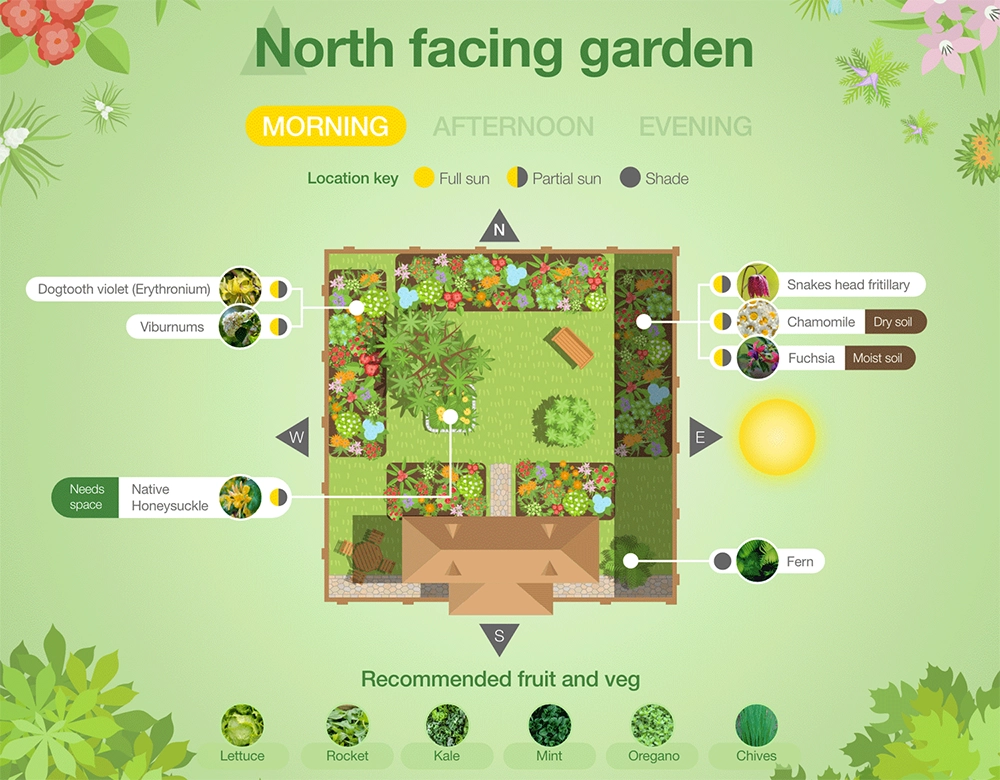


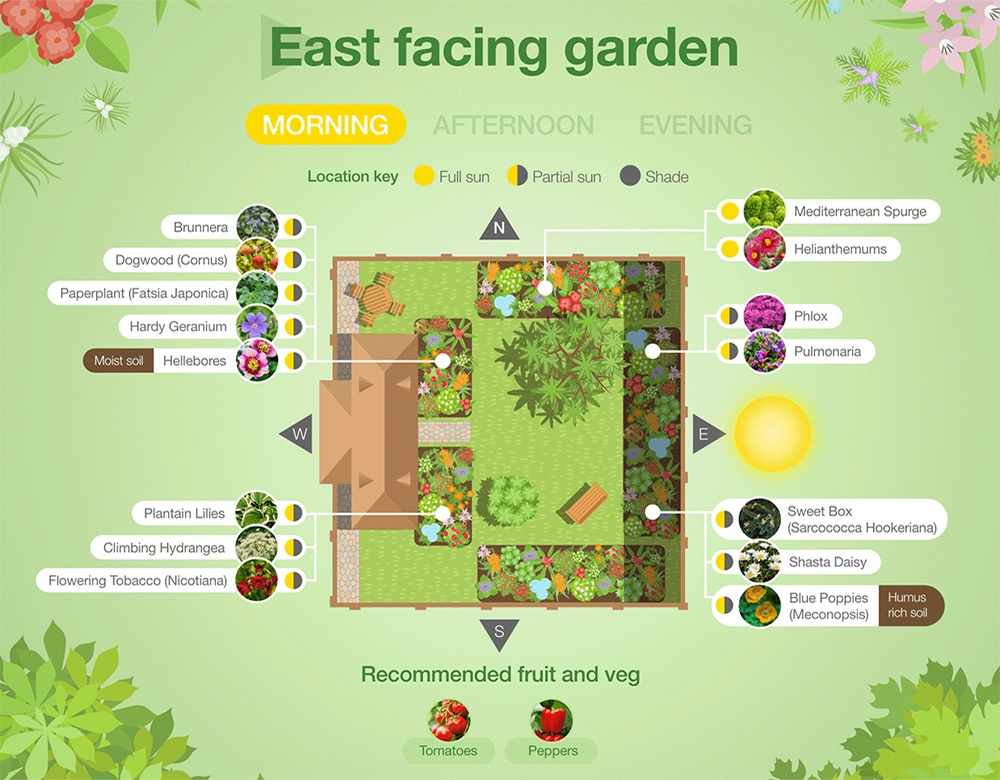
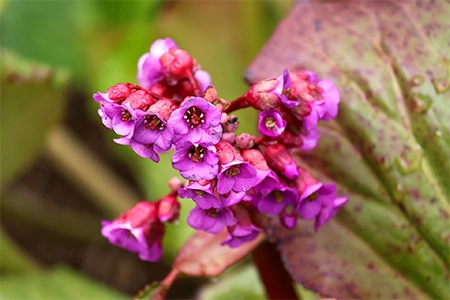
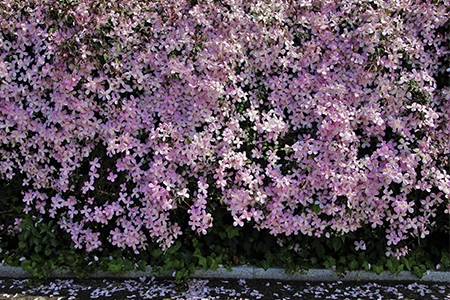
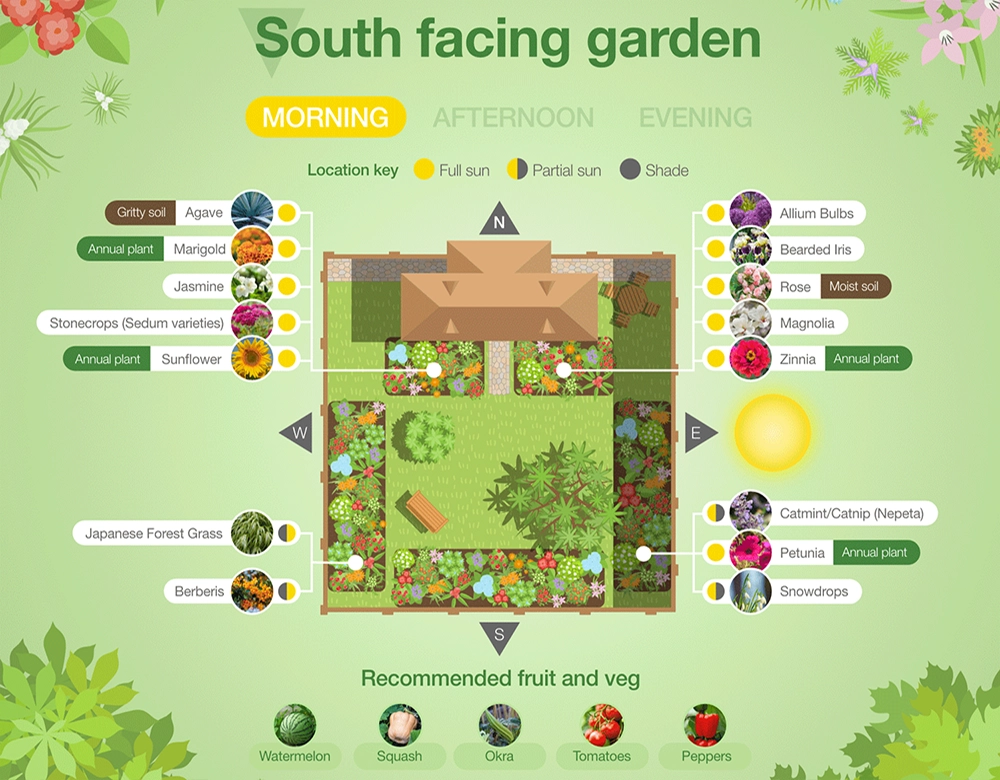

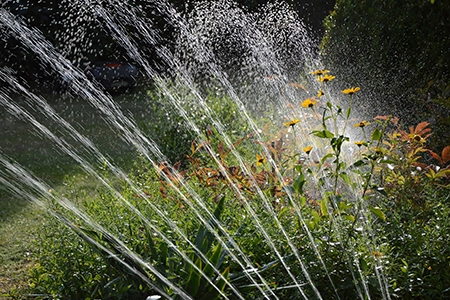
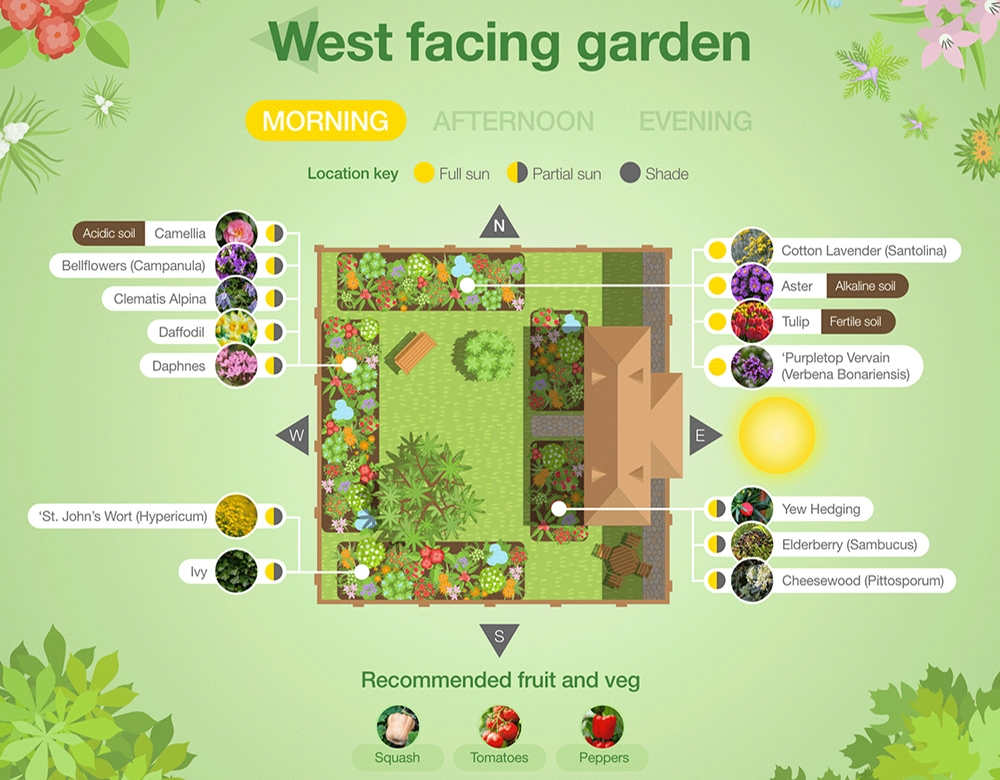
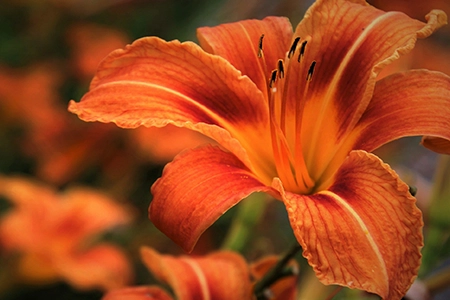





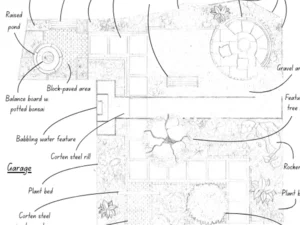
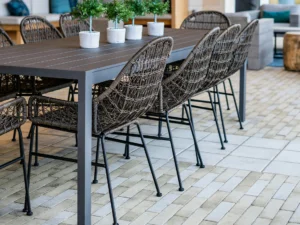


3 Responses
I blog often and I truly appreciate your content. This article has trruly peaked
my interest. I’m going to bookmark your site and keep checking for
new details about once per week.
Thank you for the kind feedback and I’m glad you liked the blog! Don’t forget to check out our latest ones as I’m sure they’ll prove to be an interesting read for you!
I have been surfing on-line more than three hours as of late, yet I by no means found any attention-grabbing article like
yours. It’s lovely worth sufficient for me. In my opinion, if
all webmasters and bloggers made excellent content as you probably
did, thee web might be a lot more helpful than ever before.